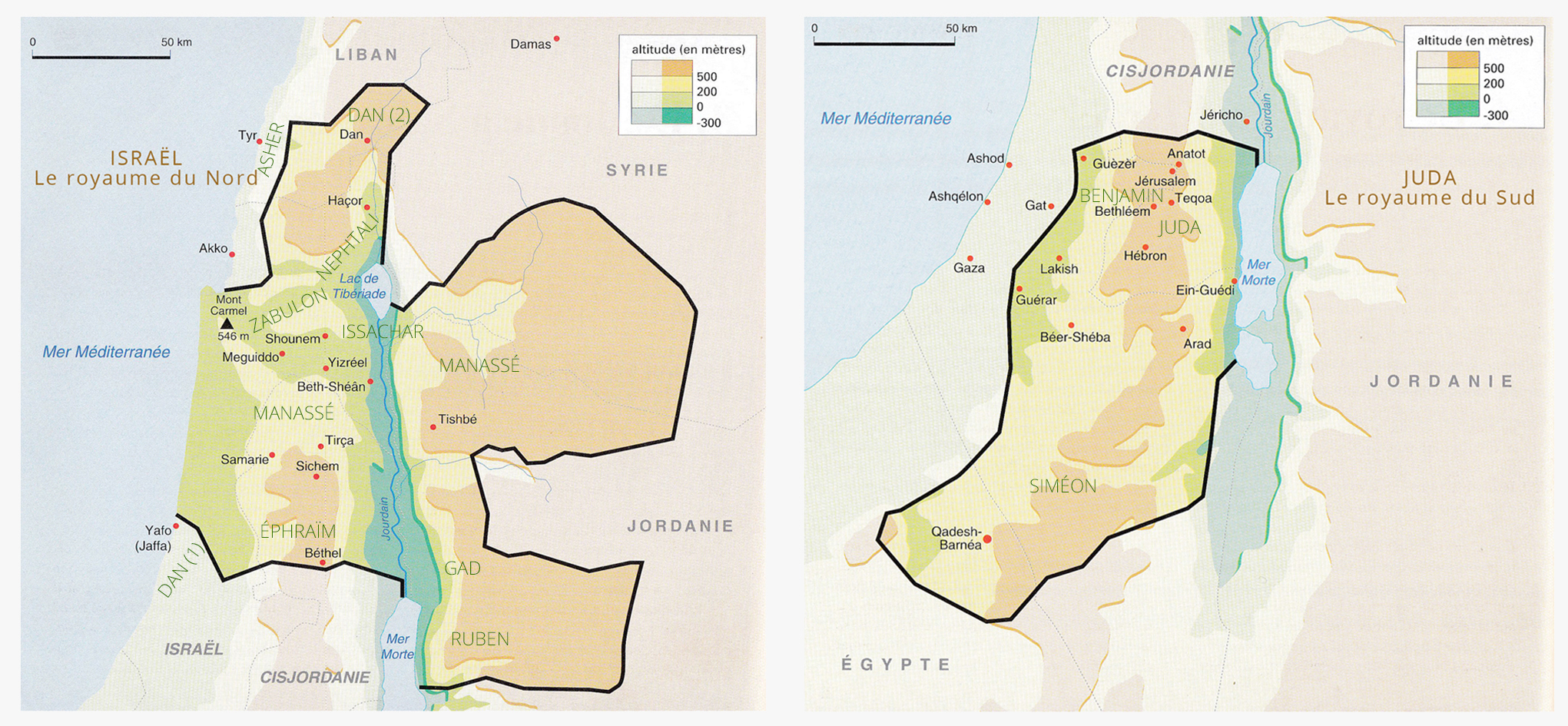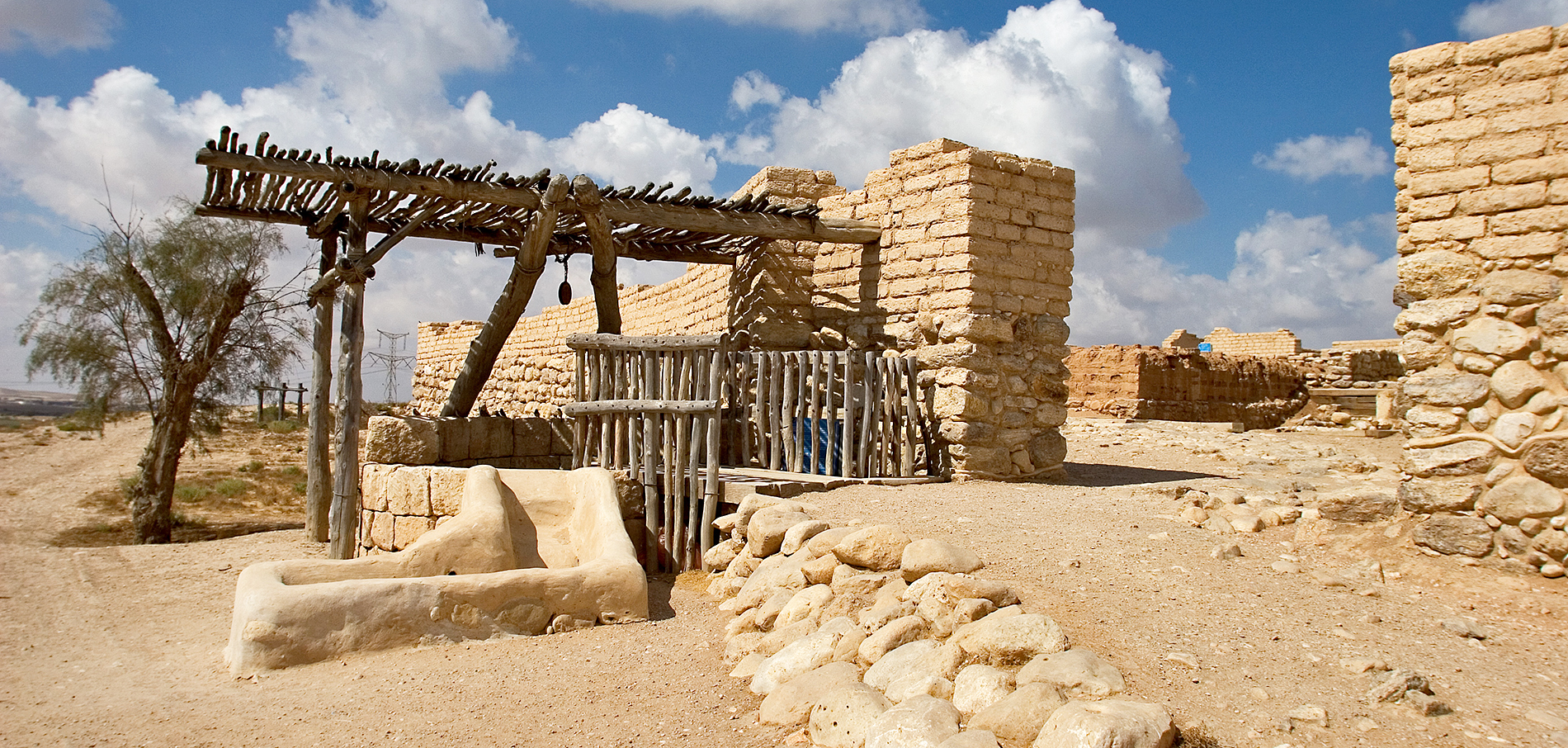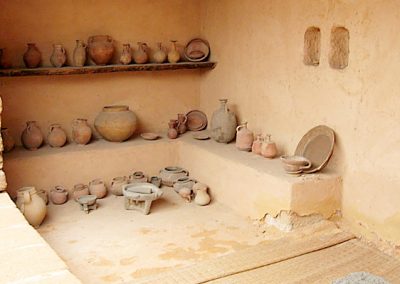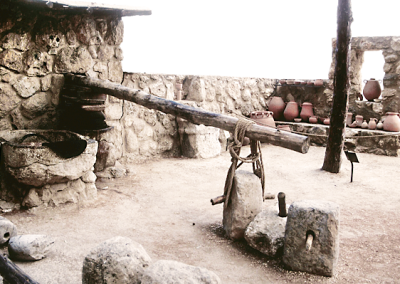
Bible, History, Archaeology
Bible,
History,
Archaeology
Historical summary of the Hebrew people
Contents:
Introduction – Maps of the two kingdoms – The Beer-Scheba tel – Image gallery
Introduction

In 135 AD, at the end of a merciless war against the Roman Empire, the ancient Jewish state disappeared.
The ancient history of the Hebrews is that of an existence that stretches between these two dates, over a period of around two millennia.
Image opposite: Reconstruction of the Temple Menorah. The Temple Institute, Jewish Quarter, Jerusalem. Public domain.
The Bible tells us that the Hebrews are descended from the family of Abraham, who came from Lower Mesopotamia. After living in Canaan under the guidance of the Patriarchs, they were driven out by famine and settled in Egypt, where they soon became a subjugated people.
They came out of Egypt around the 14th / 13th century B.C., and stayed at Sinai, where the Lord gave them the Law (Torah), through Moses. They conquered and colonized Canaan, where they established a theocratic regime that lasted for around two and a half centuries. Towards the end of the 11th century BC, the Hebrews established a monarchy. After the brilliant reigns of David and Solomon, around 931 B.C., a conflict led to the creation of the Hebrew monarchy. the kingdom split in two Israel with ten tribes to the north and Judah with two tribes to the south, with Jerusalem as its capital. A period of political existence par excellence, this royal period was also that of the Prophets.
Image opposite: head of a small earthenware figurine, discovered in 2017 at the site of the ancient fortification of Abel Beth Maacah, in northern Israel. Because of the elegance of the style, archaeologists believe it could be a representation of a dignitary, perhaps a king of biblical Israel. Three of the main contenders are King Ahab of Israel, King Hazael of Aram-Damascus and King Ethbaal of Tyre. 9th century B.C. Height: approx. 5 cm. Israel Museum. Photo Marc Truschel.
In 721/722 B.C., the northern kingdom of Israel was destroyed by the NeoAssyrians of king Sargon II ; In 586 B.C., the southern kingdom of Judah fell to the Neobabylonians led by Nebuchadnezzar II (the Nebuchadnezzar of the Bible). However, the Hebrews rebuilt their state after an eclipse and an exile of several decades. They underwent Persian and then Hellenistic tutelage, before regaining total independence for a time under the reign of the Hebrews. the hasmonean princes (from 165 to 63 BC).
 Image opposite: Hasmonean copper coin, prutah, bearing the effigy of Alexander Jannaeus I. Between 76 and 103 B.C.
Image opposite: Hasmonean copper coin, prutah, bearing the effigy of Alexander Jannaeus I. Between 76 and 103 B.C.
Obverse: anchor set vertically. Legend BASILEWS ALEXANDROU (of King Alexander).
Reverse: Aramaic legend between the grapes. Wheel or star with eight grapes globulated in the center. (translation Yehonathan the king). © cgb.fr.
The Roman conquest turned the Judeans into tributaries, subjecting them to military occupation and political oppression without destroying their national structures. Various nationalist upsurges and two wars (from 66 to 73 and from 132 to 135) pitted them against Rome, which finally got the better of them.
Simplified chronology of ancient Israel →
Chronological table of the reigns of the Old Testament kings →
Below left: map of Israel, the northern kingdom, with Samaria as its capital.
The map on the right: Judah, the southern kingdom, with Jerusalem as its capital. © D.R.
The tel of Beer-Sheba. One of the most important archaeological sites in biblical history. © Doron Nissim.
Reconstruction of an Israelite house at the Museum of the Land of Israel, Tel Aviv, Israel. Monarchic period between the 10th and 7th centuries B.C. © Talmoryair.
Reconstruction of an Israelite house at the Land of Israel Museum, Tel Aviv, Israel. Monarchic period between 10th and 7th centuries BC.
Reconstruction of an Israelite house. Monarchic period between the 10th and 7th centuries B.C. Public domain
Reconstruction of an Israelite house. Monarchic period between 10th and 7th century BC.


 Image opposite: Hasmonean copper coin, prutah, bearing the effigy of Alexander Jannaeus I. Between 76 and 103 B.C.
Image opposite: Hasmonean copper coin, prutah, bearing the effigy of Alexander Jannaeus I. Between 76 and 103 B.C.



